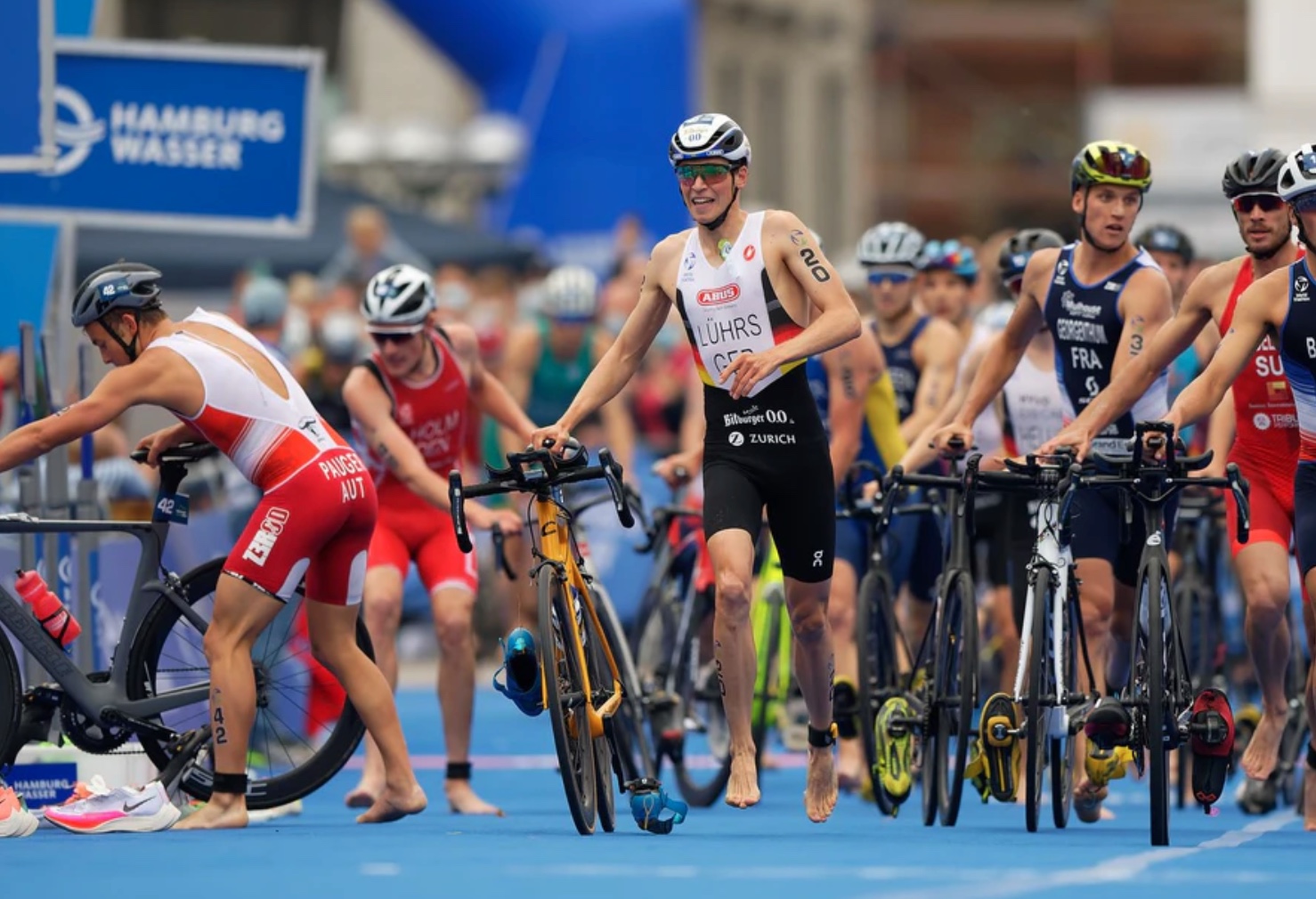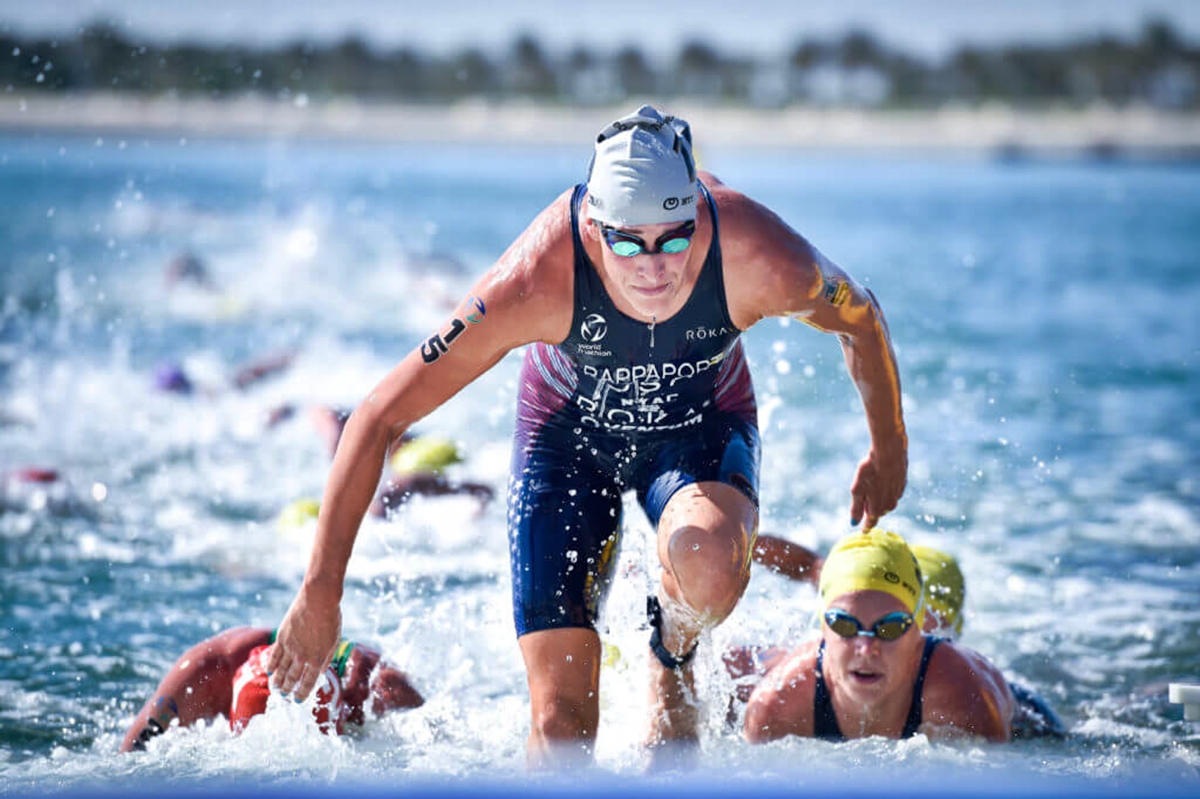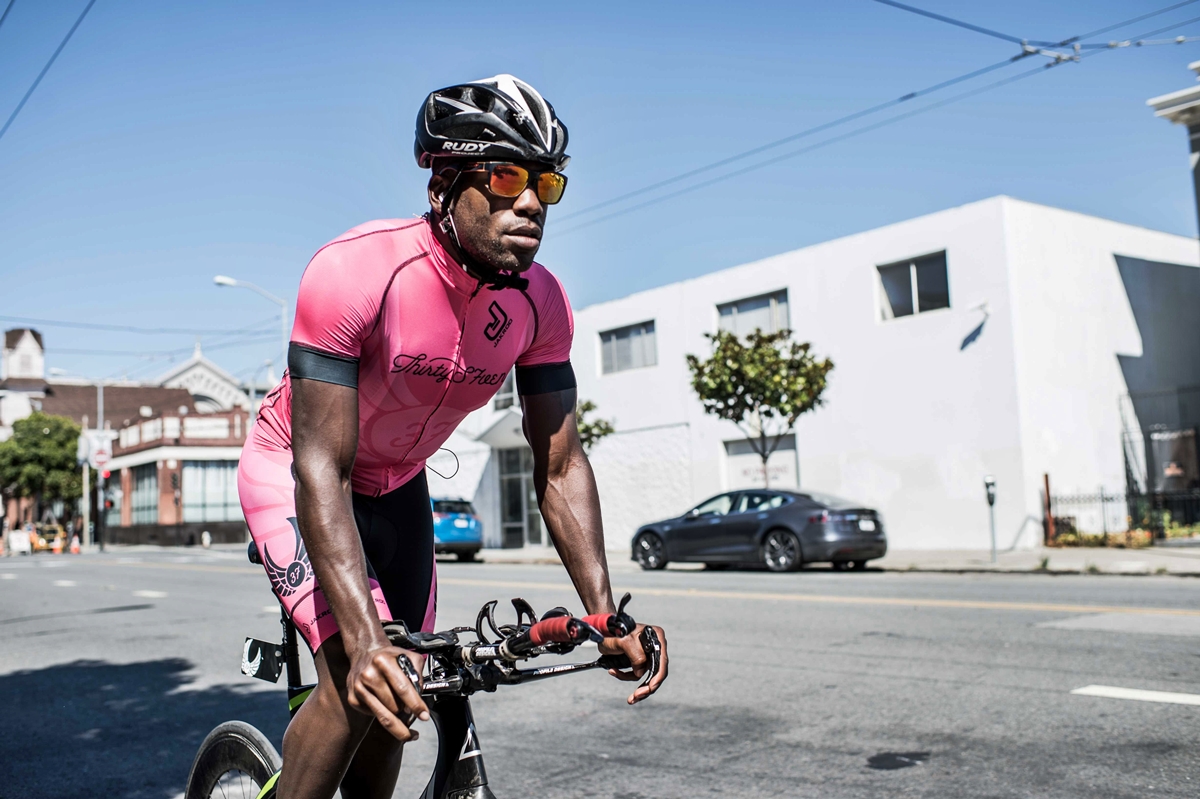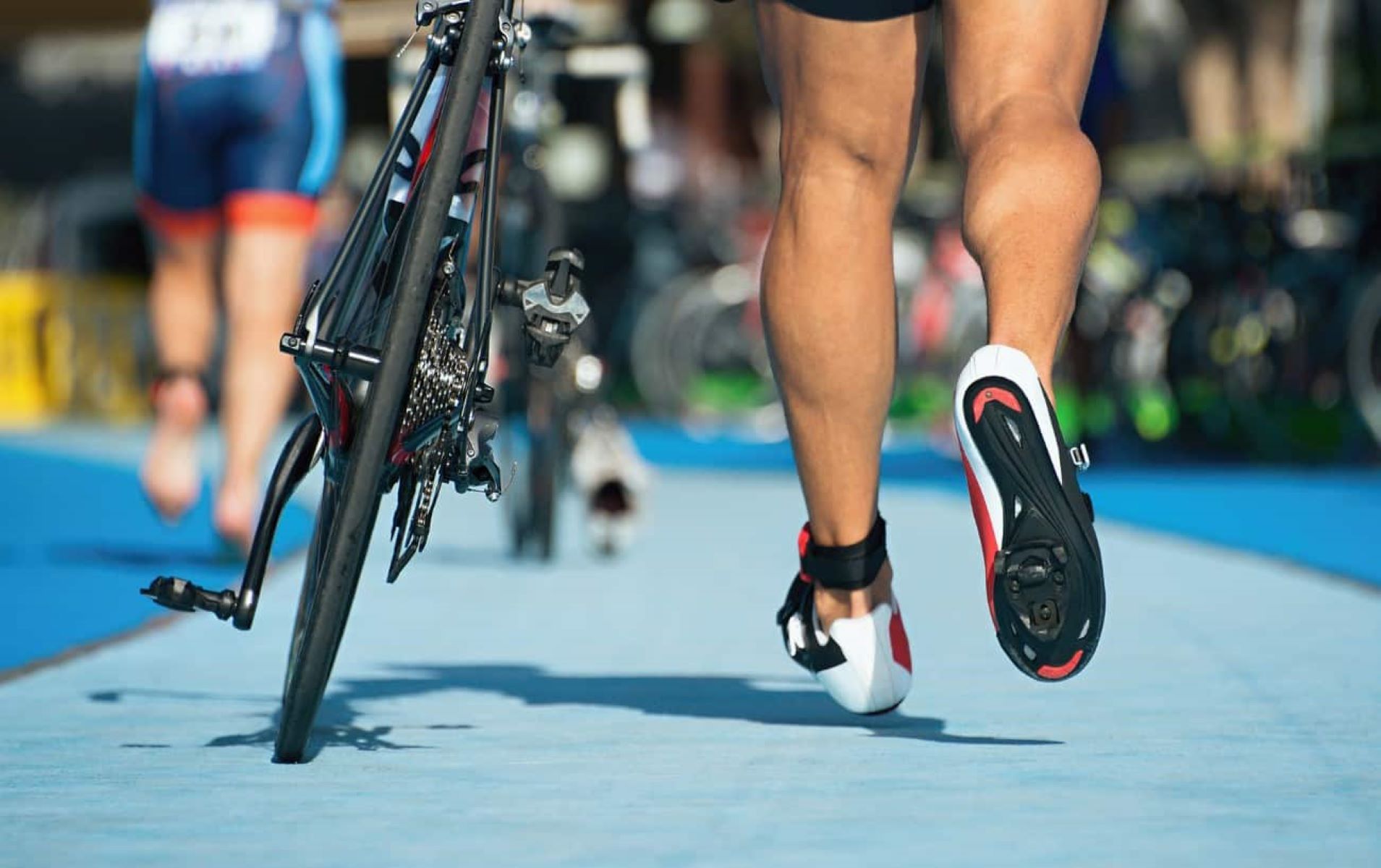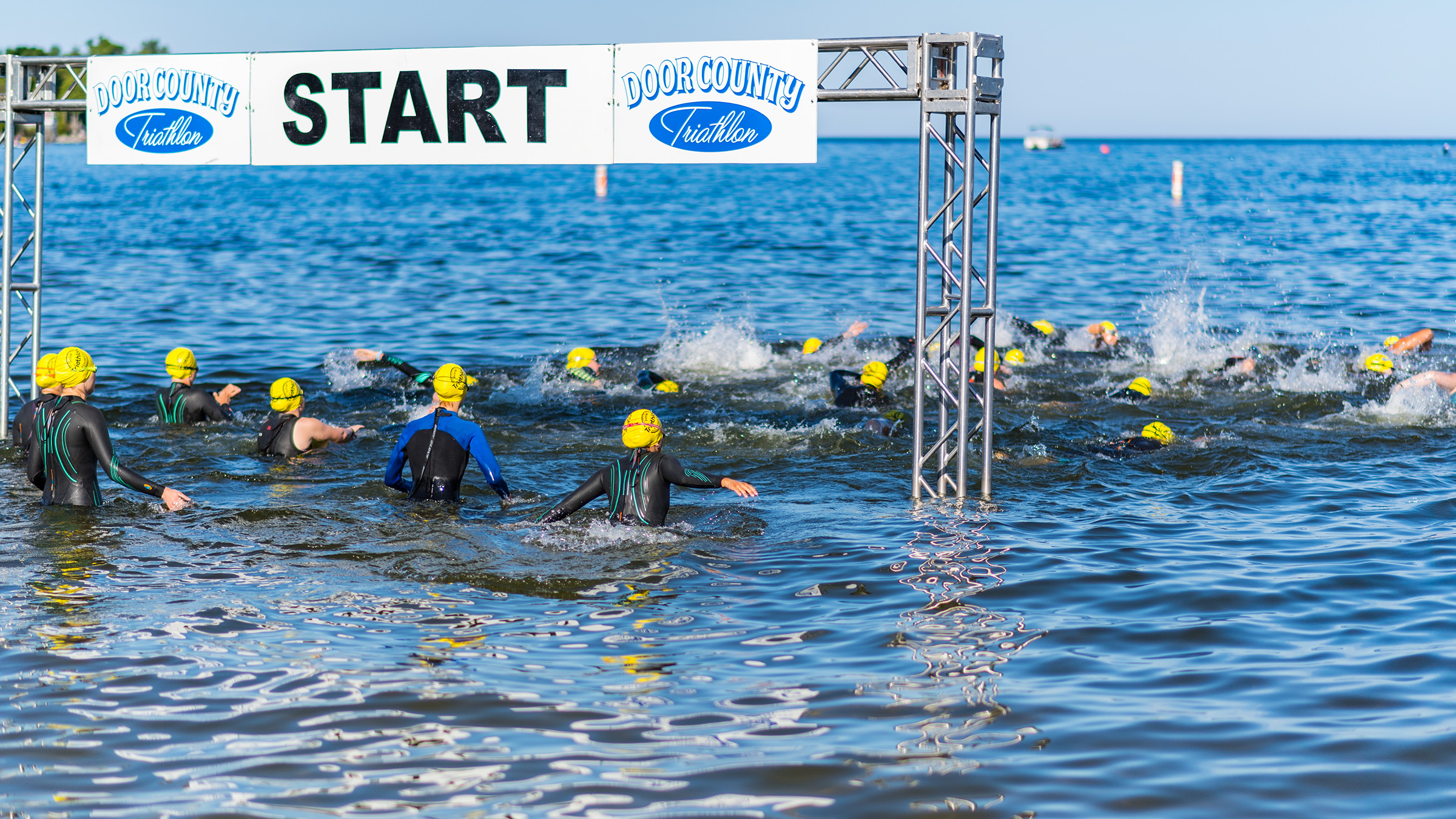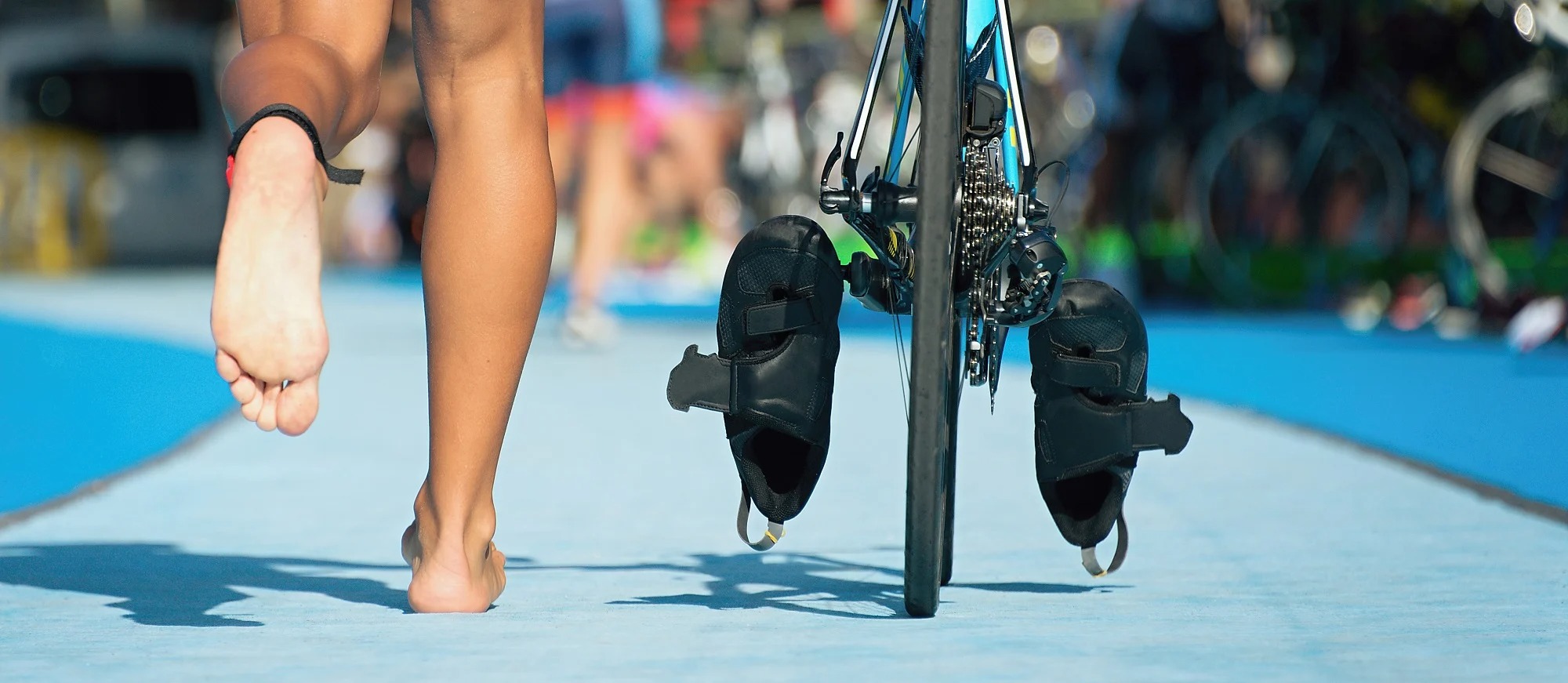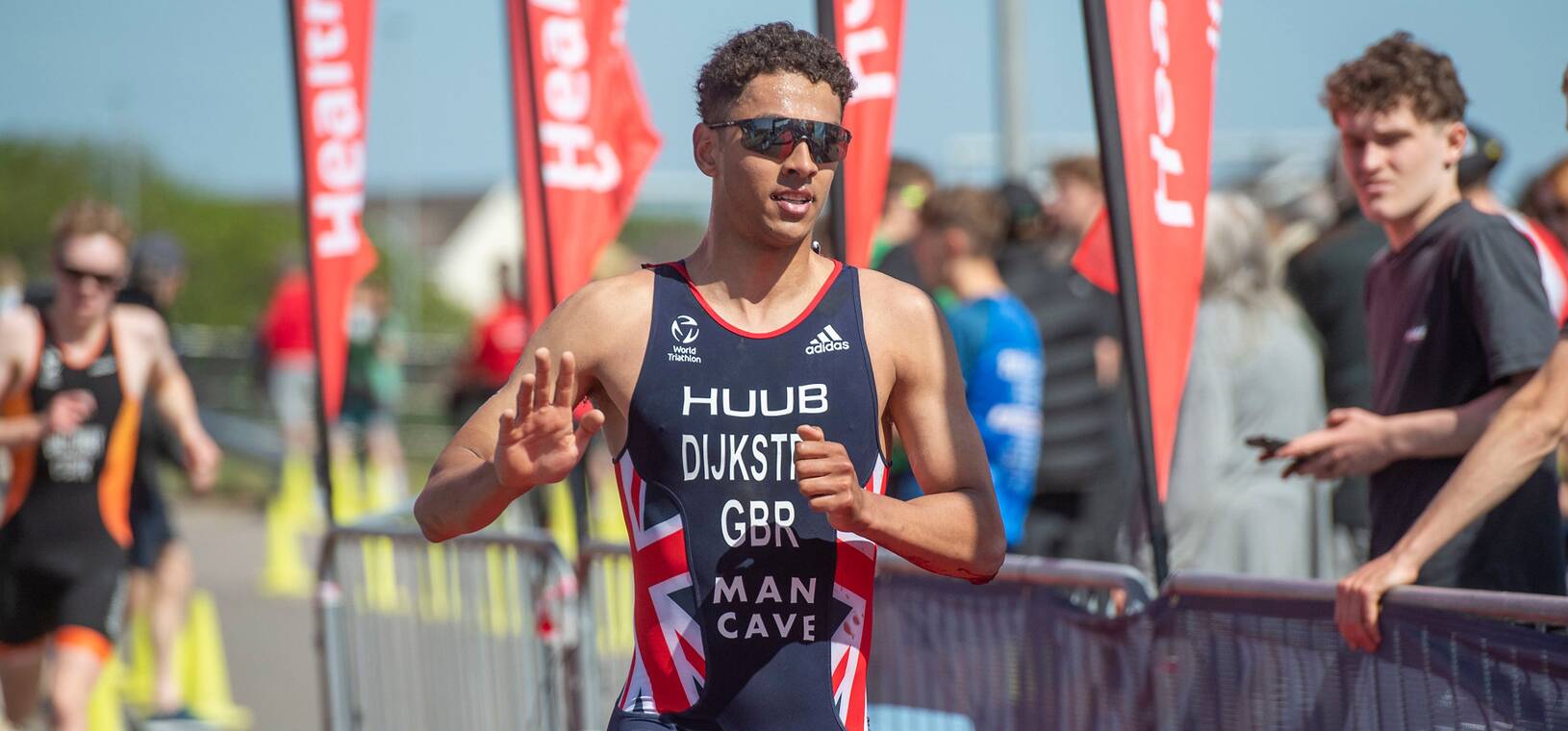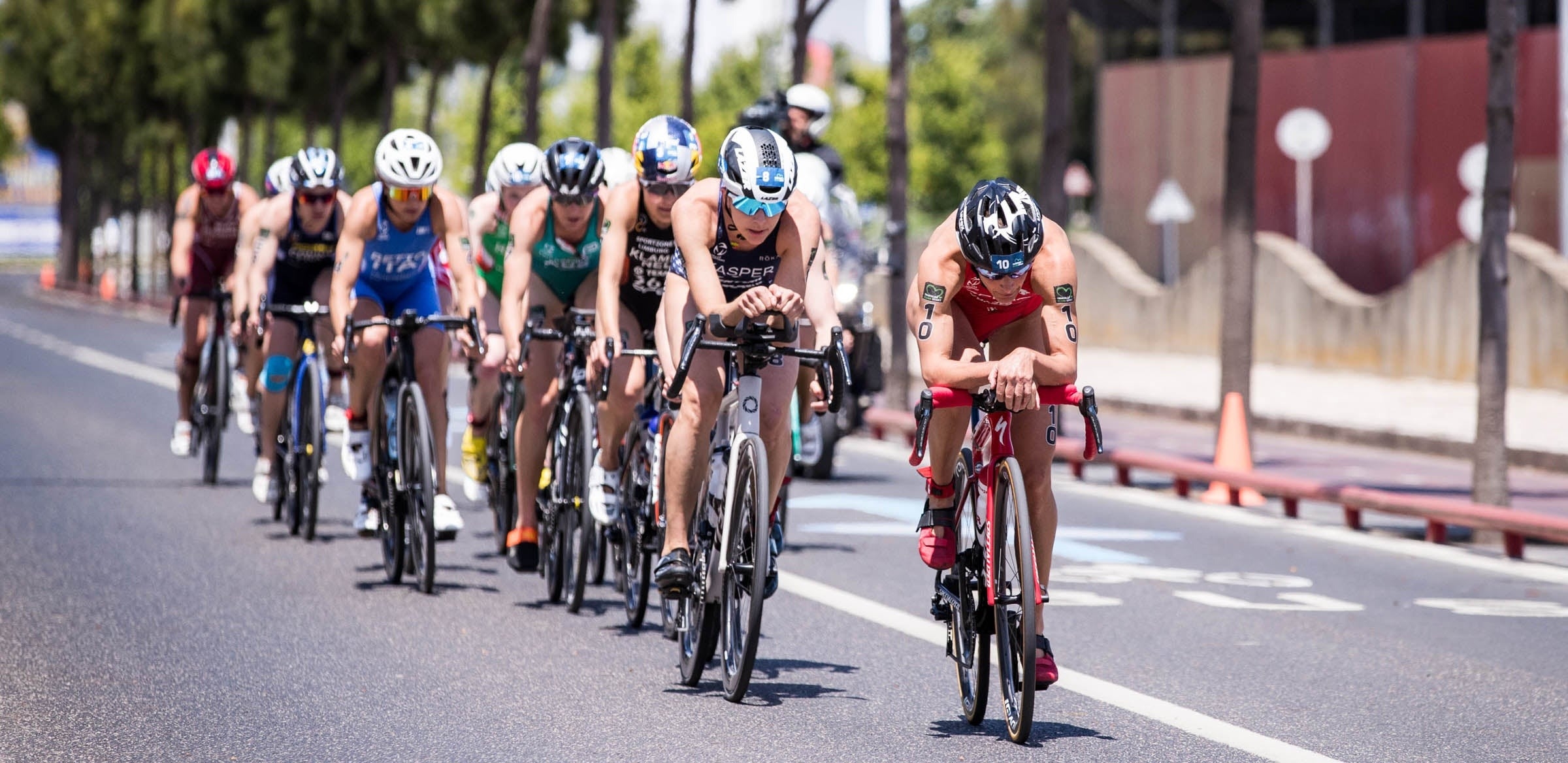

Featured
What Is A Good Time For Sprint Triathlon
Modified: January 2, 2024
Looking to participate in a sprint triathlon? Discover what is considered a good time for a sprint triathlon and get featured in this exciting event.
Introduction
Welcome to the exciting world of sprint triathlons! If you’re considering participating in a sprint triathlon, one of the first decisions you’ll need to make is choosing a good time to compete. The timing of your race can have a significant impact on your overall experience, performance, and enjoyment. In this article, we’ll explore the various factors you should consider when selecting the ideal time for your sprint triathlon.
A sprint triathlon is a multi-sport event that includes three disciplines: swimming, cycling, and running. Unlike longer distance triathlons, such as Olympic or Ironman, a sprint triathlon is typically shorter in duration, making it a popular choice for beginners or those looking to challenge themselves within a shorter timeframe.
When it comes to choosing a good time for your sprint triathlon, several factors should be taken into account. These include the time of year, weather conditions, training availability, and your personal schedule. Each of these factors plays a crucial role in ensuring a positive and successful race experience.
The time of year is an essential consideration when selecting a sprint triathlon event. The racing season can vary depending on your location and climate. In warmer regions, races may be held year-round, while in colder climates, they tend to take place during the spring and summer months. It’s important to identify the most suitable time based on your preference and ability to train in specific weather conditions.
Weather conditions can significantly impact your race day experience. Extreme heat, high humidity, or inclement weather can affect your performance and overall enjoyment. Consider the average weather patterns during the time of year you’re considering and assess your ability to cope with the conditions. If you’re sensitive to heat or uncomfortable participating in adverse weather, it may be wise to choose a race during a milder season.
Your training availability is another factor to consider when selecting a good time for your sprint triathlon. Determine the amount of time you can commit to training leading up to the event. If you have other commitments or limited availability during certain months, it’s essential to choose a race date that aligns with your training schedule.
Finally, your personal schedule plays a vital role in deciding when to compete in a sprint triathlon. Consider any personal or professional commitments, holidays, or family events that may conflict with your race day. It’s important to select a time that allows you to fully focus on your training and race day experience without added stress or distractions.
When choosing a good time for a sprint triathlon, it’s crucial to find the right balance between the time of year, weather conditions, training availability, and your personal schedule. By carefully considering these factors and finding the timing that works best for you, you’ll enhance your chances of having a successful and enjoyable race experience.
Understanding Sprint Triathlons
Before diving into the factors to consider when choosing a good time for a sprint triathlon, let’s first understand what exactly a sprint triathlon entails. A sprint triathlon is a triathlon race that consists of three specific disciplines: swimming, cycling, and running. However, unlike longer distance triathlons like Olympic or Ironman, a sprint triathlon is designed to be shorter in duration and distance.
The distances for each discipline in a sprint triathlon can vary slightly, but they typically range from a 750-meter swim, a 20-kilometer bike ride, and a 5-kilometer run. These distances are more manageable for beginners or individuals who want to compete in a triathlon without committing to the longer distances required by other triathlon categories.
One of the advantages of participating in a sprint triathlon is the opportunity to experience all three disciplines in a relatively short amount of time. This format allows athletes to test their physical abilities, endurance, and mental resilience in a challenging yet achievable setting.
Swimming is usually the first discipline in a sprint triathlon. It can take place in a pool or open water, depending on the event. Athletes are required to swim a designated distance, often marked by buoys or lanes, while navigating through other participants. Efficient swimming technique and endurance are crucial in achieving a successful start to the race.
Following the swim, participants transition to the cycling portion of the race. Cyclists ride a specified distance, typically on roads that are closed or controlled by race organizers. The biking leg requires a combination of speed, endurance, and technical skills, as participants navigate through varied terrain and deal with potential changes in weather conditions.
Once the cycling leg is completed, athletes transition to the final discipline, which is running. The running portion is typically a 5-kilometer distance, which is a manageable yet challenging run to complete after the swim and bike segments. Runners must maintain their energy and mental focus to finish strong and cross the finish line.
Participating in a sprint triathlon offers numerous benefits. It provides an opportunity for individuals to challenge themselves physically, set personal goals, and experience the thrill of crossing the finish line. Sprint triathlons also promote a healthy lifestyle and encourage individuals to engage in multisport activities, improving overall fitness and well-being.
Understanding the structure and demands of a sprint triathlon is essential when considering the best time to compete. Knowing the distances, order of disciplines, and the physical and mental requirements of the event can help athletes make informed decisions and better prepare themselves for a successful race day experience.
Factors to Consider for Choosing a Good Time
When selecting the ideal time to compete in a sprint triathlon, it’s crucial to consider several factors that can impact your overall race experience. These factors include the time of year, weather conditions, training availability, and your personal schedule. Taking these aspects into account will help ensure you choose a time that suits your fitness goals, preferences, and logistical considerations.
The time of year is an important factor to consider when choosing a good time for your sprint triathlon. Racing seasons can vary based on your location and climate. In warmer regions, such as the southern states or tropical areas, triathlons may occur year-round. In contrast, colder climates, such as northern states or countries with distinct seasons, often schedule races during the spring and summer months when outdoor conditions are more favorable.
Weather conditions can significantly impact your race day experience, so it’s essential to consider the typical weather patterns during the time you’re considering for your sprint triathlon. Extreme heat, humidity, or inclement weather can affect your performance and overall enjoyment of the event. Assess your ability to cope with these conditions and determine if you prefer racing in milder climates or if you thrive under more challenging weather scenarios.
Training availability is another critical factor to consider. Evaluate the amount of time you can dedicate to training leading up to the race. If you have a busy schedule or other personal commitments during specific months, it might be wise to choose a race date that aligns with your availability. This will allow you to have adequate training time to prepare your body and mind for the demands of the sprint triathlon.
Your personal schedule should also be taken into consideration. Consider any personal or professional commitments, holidays, or family events that may conflict with your desired race date. Choose a time that allows you to focus on your training and race without added stress or distractions. This will help ensure that you can fully commit to your preparation and enjoy the race day experience to the fullest.
Ultimately, finding the right balance between the time of year, weather conditions, training availability, and personal schedule is crucial when choosing a good time for your sprint triathlon. By carefully considering these factors, you can select a date that aligns with your goals and maximizes your chances of having a successful and enjoyable race.
Time of Year
When it comes to choosing a good time for your sprint triathlon, considering the time of year is an essential factor. The racing season can vary depending on your location and climate, so it’s important to understand the implications of different times of the year for your race experience.
In warmer regions, such as the southern states or tropical areas, triathlons may occur year-round. This allows athletes to have a wide range of options when it comes to choosing a race date. However, it’s important to consider the weather conditions during each season. Summer months tend to be hotter and more humid, which can make racing conditions more challenging. On the other hand, winter races may offer milder temperatures but can bring the risk of unpredictable weather patterns.
In contrast, colder climates, such as northern states or countries with distinct seasons, typically schedule sprint triathlons during the spring and summer months. Spring races can provide mild temperatures and blooming landscapes, creating a pleasant race environment. Summer races may offer warmer weather and longer daylight hours, allowing for a more enjoyable race experience. However, it’s important to consider the potential for sudden changes in weather, especially if the race involves open water swimming or cycling on roads.
The time of year you choose for your sprint triathlon can also impact your training schedule. If you prefer to train outdoors, choosing a race during a season with favorable weather conditions can enhance your training experience. Additionally, having a clear race goal and timeline can provide you with the motivation and structure needed to stay committed to your training throughout the year.
It’s also worth considering the availability of other races or events during certain times of the year. Some triathlon enthusiasts may prefer to participate in multiple races throughout the season, creating a sense of progression and accomplishment. Researching the race calendar and considering any desired races that align with your goals can help you choose the best time of year to compete.
Overall, understanding the implications of the time of year is crucial when choosing a good time for your sprint triathlon. Consider the weather conditions, training implications, and availability of other races to make an informed decision. By doing so, you can optimize your race experience and increase your chances of achieving your goals in a supportive and enjoyable racing environment.
Weather Conditions
When selecting the ideal time for your sprint triathlon, considering the weather conditions is crucial. The weather can have a significant impact on your race day experience, performance, and overall enjoyment. Understanding the typical weather patterns during different times of the year can help you make an informed decision.
Extreme heat and high humidity can make racing conditions more challenging. If you are sensitive to heat or uncomfortable participating in hot and humid weather, it may be wise to choose a race date during a milder season. This way, you can avoid the risk of heat-related issues and ensure a more comfortable racing environment. Additionally, races held in cooler temperatures can provide better conditions for running and cycling, allowing you to perform at your best.
On the other hand, if you thrive in warmer conditions and enjoy the heat, you may prefer races held during the summer months. Be aware, however, that higher temperatures can lead to higher sweat rates and increased dehydration, so proper hydration and cooling strategies become even more important.
In addition to temperature, it’s crucial to consider other weather factors such as wind, rain, and storms. Strong winds can affect cycling performance and necessitate adjustments in your race strategy. Rain can create slippery conditions on the course, particularly during biking and running legs. While it’s impossible to predict and control the weather completely, choosing a race date during a season with generally milder weather can minimize the risk of adverse conditions.
When researching potential race dates, it’s helpful to consult historical weather data for the region where the event will take place. This information can give you insights into the average weather conditions during specific months and help you gauge the likelihood of encountering extreme weather.
Keep in mind that weather conditions can change unexpectedly, especially during outdoor events. Stay updated with weather forecasts leading up to the race and be prepared to adapt your race strategy if necessary. Bring appropriate clothing and gear to accommodate different weather scenarios, ensuring that you are both comfortable and safe during the race.
Ultimately, choosing a sprint triathlon date with favorable weather conditions can contribute to a more enjoyable race experience, allowing you to perform at your best without unnecessary discomfort or risk. Assess your tolerance for different weather conditions and select a time that aligns with your preferences and goals, keeping in mind the potential challenges and advantages that various weather patterns can present.
Training Availability
When deciding on the best time to compete in a sprint triathlon, it’s essential to consider your training availability. The amount of time you can dedicate to training leading up to the event plays a crucial role in your preparation and performance on race day.
Assessing your training availability involves considering various factors, including your schedule commitments, work or school obligations, and personal responsibilities. Understanding the demands on your time will help determine the most suitable race date that aligns with your availability.
If you have a busy schedule with limited free time, it’s important to choose a race date that allows you to allocate enough time for training and recovery. Consider the duration of your training plan and ensure that you have ample opportunities to complete your swim, bike, and run workouts without feeling rushed or overwhelmed.
It’s also important to consider any upcoming events or commitments that could potentially interfere with your training. For example, if you have a major work project or family event scheduled during a particular month, it may be wise to select a race date that falls outside of that period to avoid compromising your training consistency.
Additionally, take into account any travel plans or vacations that may impact your ability to maintain your training routine. If you’re planning a trip during a certain time, make sure to schedule your race around it to ensure you have uninterrupted training leading up to the event.
Another aspect to consider is the availability of training facilities and resources. If you rely on specific swimming pools or cycling routes for your training, ensure that they will be accessible during the time you plan to compete. Consider any closures or restrictions that might impact your ability to train effectively.
Flexibility is key when it comes to training availability. While it’s important to commit to a training plan and maintain consistency, it’s also necessary to be open to adjustments and modifications. Unexpected events or changes in schedule can sometimes disrupt your training routine, but being adaptable and finding alternative training options can help you stay on track.
By carefully considering your training availability, you can select a sprint triathlon date that allows you to devote sufficient time and effort to your preparation. Remember, a well-structured training plan and consistent training are essential for building endurance, improving performance, and achieving your race day goals.
Personal Schedule
When choosing a good time to compete in a sprint triathlon, your personal schedule is an important factor to consider. Understanding your commitments and obligations will help you select a race date that allows you to fully focus on your training and race day experience.
Consider any personal or professional commitments that may conflict with your desired race date. Assess your availability and the demands on your time during different periods of the year. This includes taking into account work schedules, family responsibilities, and any other significant events or commitments that require your attention.
If you have a particularly busy period scheduled, it may be wise to choose a race date that falls outside of that timeframe. This will help avoid added stress and ensure that you have the time and mental space to properly prepare for the race.
Additionally, consider any holidays or vacations that may impact your training and race preparations. If you have a planned vacation during a certain time, make sure to select a race date that allows you to have uninterrupted training leading up to the event. This will ensure that you can maintain your fitness level and not lose progress while you’re away.
It’s also worth considering the support and encouragement you may receive from friends and family. If you have loved ones who are willing to attend your race or assist with your training, it can be beneficial to choose a date that aligns with their availability. Their presence and support can contribute to a more positive and enjoyable race day experience.
By selecting a race date that accommodates your personal schedule, you’ll be able to approach the event with a clear mind and a focused mindset. This will allow you to fully immerse yourself in your training and race preparations without added distractions or competing priorities.
It’s important to strike a balance between your personal schedule and your triathlon goals. Evaluate your commitments and priorities to identify a race date that allows you to fully commit to your training and race preparation. Having the flexibility to align your personal schedule with your athletic pursuits will enhance your overall experience and increase your chances of a successful sprint triathlon.
Finding the Right Balance
Choosing the right time to compete in a sprint triathlon is a balance between various factors, including the time of year, weather conditions, training availability, and personal schedule. By finding the right balance among these considerations, you can optimize your race experience and increase your chances of success.
It’s important to align your race date with the time of year that suits your preferences and ability to train effectively. Consider the climate and typical weather patterns during different seasons, and determine the most comfortable and suitable conditions for your race. This will ensure that you’re able to compete in an environment that allows you to perform at your best.
At the same time, consider your training availability and the obligations and commitments in your personal schedule. Choose a race date that accommodates these factors, ensuring that you have enough time to properly train and adequately prepare for the event. This will help you avoid unnecessary stress and distractions during your training and on race day.
It’s also crucial to strike a balance between setting challenging goals and being realistic about your training capacity. Setting goals that push you outside your comfort zone is important for growth and improvement, but be sure to consider your current fitness level, training volume, and time constraints. This will help you set achievable goals that motivate and challenge you without overwhelming you.
Keep in mind that finding the right balance may require a degree of flexibility and adaptability. Unexpected events or changes in circumstances may require you to adjust your training or race plans. Embrace these changes and find creative solutions to ensure that you can continue your training progression and maintain your motivation.
It can also be helpful to seek support from others who have experience in sprint triathlons or from a coach. They can provide guidance and advice in navigating the various considerations and finding the right balance for your individual circumstances.
Ultimately, finding the right balance among the time of year, weather conditions, training availability, and personal schedule is key to choosing a good time for your sprint triathlon. By considering these factors and making informed decisions, you’ll be able to set yourself up for a rewarding and successful race experience.
Conclusion
Choosing a good time to compete in a sprint triathlon requires careful consideration of several factors. The time of year, weather conditions, training availability, and personal schedule each play a vital role in determining the ideal race date. By finding the right balance among these factors, you can enhance your race experience and increase your chances of achieving your goals.
Understanding the time of year allows you to select a race date that aligns with your preferred climate and training preferences. Consider the weather patterns and racing seasons in your region to find a time that suits your comfort level and ability to perform at your best.
Weather conditions can significantly impact your race day experience. Evaluating factors such as temperature, humidity, wind, and precipitation will help you choose a date that provides favorable conditions and minimizes the risk of adverse weather affecting your performance.
Your training availability is crucial in ensuring proper preparation for the race. Assess your schedule and commitments to determine a race date that allows you to dedicate sufficient time and focus to your training regimen. Maintaining consistency and adequately preparing your body and mind are key to a successful race.
Your personal schedule should also be taken into account when selecting a race date. Consider any personal or professional commitments, holidays, or vacations that may conflict with your training or race day. Finding a time that aligns with your schedule will reduce stress and distractions, allowing you to fully immerse yourself in your preparation.
Striking a balance between these factors is essential. Set challenging yet achievable goals, be flexible in adapting to unforeseen circumstances, and seek support from others who can provide guidance and advice. By carefully considering the various factors and finding the right balance, you’ll be well on your way to having a fulfilling and successful sprint triathlon experience.
So, take the time to weigh the options, assess your personal circumstances, and make an informed decision about the best time to compete in a sprint triathlon. Remember, the journey to the finish line is just as important as the destination itself, so make sure to enjoy every step of the way!

